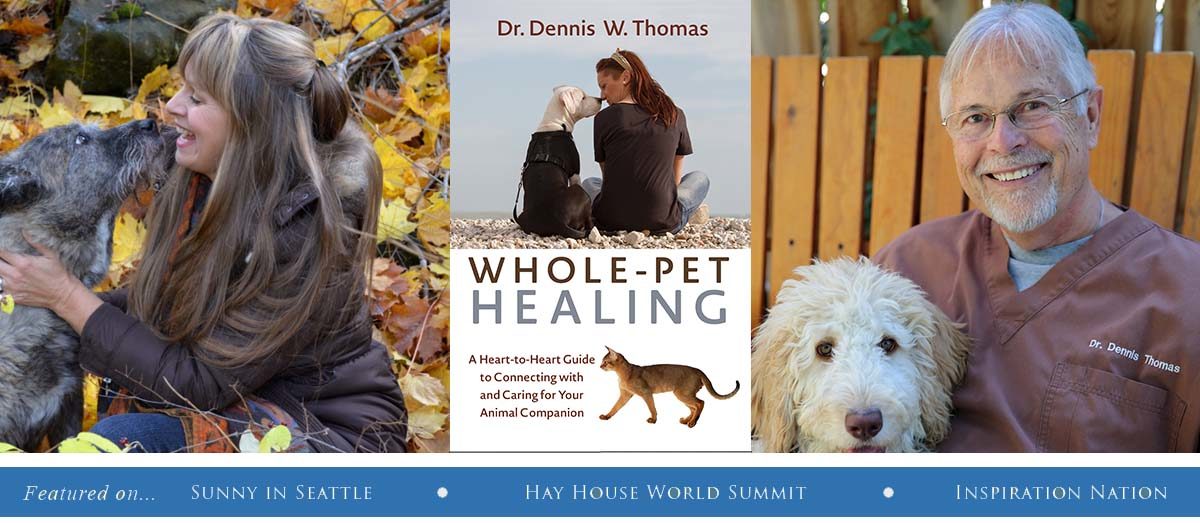If you have been researching pet food recently, you will know that feeding dogs and cats is a hot topic. I would go so far as to say there is a war going on between the naturalists and the pet food industry and unfortunately, the pet caretaker is caught in the crossfire. Let’s take a look at some history and we can find out why. Then, I will let you know “the rest of the story.”
Up until the last generation or so, pet food was not a top priority. The pet caretaker went to the grocery store and bought a bag of dog or cat food, usually the one that was on sale. Everyone seemed pretty content with that, especially the pet food industry. The local veterinarian might have a brand that he or she liked better than others, but most vets claimed that all of the pet food was basically the same, so pick what you like.
It seemed like we were overlooking the most foundational component of good health; the diet. This again was not a surprise if you look closely why. Conventional pet health care is a reactive mindset. All is well until the pet gets sick and then the pet goes to the vet and action is taken. Other than giving some vaccinations and selling some insecticides, conventional medicine does not focus on prevention.
The other factor is that pet nutrition does not get a lot of attention in veterinary school. Most veterinarians had little schooling in regards to feeding pets. I spent eight years in college to be a veterinarian and during that time, I took one semester of animal nutrition in undergraduate school. One semester and that included feeding dogs, cats, horses, cows, sheep, goats, birds and more. Needless to say that we just skimmed the surface on animal nutrition.
How then did we learn the information about feeding dogs and cats that we pass along to our clients? We learned it from the pet food industry. Those clever little marketers come to the vet school and give a short presentation to students getting ready to graduate telling them how great their pet food is and why they should be recommending their diets. Then, they are at all the meetings and conventions giving away free meals and goodies in hopes that the vets will recommend their pet food.
Unfortunately, the pet food industry is not in the business of animal health. It is in the business to make money and make money they do. The pet food industry is a multi-billion dollar industry and it has been for many years. They are good at what they do; marketing bad food as good food.
Now that there is a large movement towards feeding a fresh, balanced food for our pets, the pet food industry has shown that it will not go down without a fight. The industry is spending millions of dollars advertising their pet food via television and the internet and millions of dollars more influencing regulators to denounce feeding fresh, raw diets. Whether it is the fears of salmonella and e. coli infection in people or scaring people into believing that grain-free food is the cause of heart disease, it is all the same tactics that big business will use to protect its interest.
Let’s take a look at some of the information that is being spread around and see what is the truth:
Fiction: Commercial, heat-processed pet food (kibble and canned) is healthier for your pet than feeding fresh, raw diet.
Fact: Heat-processed pet food is poor quality food due to the processing. It has been linked to almost every chronic disease found in the dog and cat. Heat destroys the nutritional value and the pet food company adds bulk vitamins and minerals back into the food to meet government standards. Kibble diets are dehydrating in nature and have been linked to chronic kidney disease in cats and dogs. Kibble is a common source of mycotoxins linked to pet disease and additives have been linked to cancer. Canned diets are also heat-processed and the lining in most canned pet food has petroleum chemicals that leach into the food. Toxicity can occur within 36 hours.
Fiction: Feeding fresh, raw diets to pets is a health hazard due to potential salmonella or e.coli infections.
Fact: There are more cases of salmonella and e.coli infections in people reported from feeding kibble than feeding raw diets. Feeding raw diets to pets is not anymore dangerous than feeding meat to ourselves. Handling raw meat is the same for people as it is for pets. Unless you are a vegetarian, handling raw meat has to be done with some caution. The only additional component is to clean the pet’s food bowl daily.
Fiction: Grain-free pet food will cause heart disease in pets.
Fact: Grain-free has nothing to do with heart disease in pets. Taurine deficiency is what is causing heart disease in pets. This comes from feeding a diet deficient in taurine. Dogs and cats get their taurine from meat and when meat is cooked, the taurine is removed chemically. Feeding a balanced, fresh pet diet using raw meat will assure the pet that it receives its required taurine. Ever hear of a pack of wolves getting heart disease because they weren’t eating grain?
Fiction: You must feed kibble to keep your pet’s teeth clean.
Fact: Dogs and cats are not chewers. They use their teeth to break down their food in order to swallow it as quickly as possible. Dental disease in pets is caused by bacteria overpopulation in the mouth. Bacterial byproducts cause plaque buildup and gingivitis leading to dental disease. Bacteria overgrowth is due to feeding too much sugar and and poor functioning immune system. Too much sugar comes from feeding dogs and cats starch in their diet and all kibble has starch in the diet. Imbalanced immune system in dogs and cats comes from damaged gut and damaged gut comes from feeding an inappropriate diet. Do you see the irony in this?
When you change from feeding heat-processed pet food to a species-appropriate, balanced diet fed raw, there is an enormous leap in the direction towards normal health and well being. Food is fundamental for the physical body and it is the best method of being proactive in your pet’s health care.

